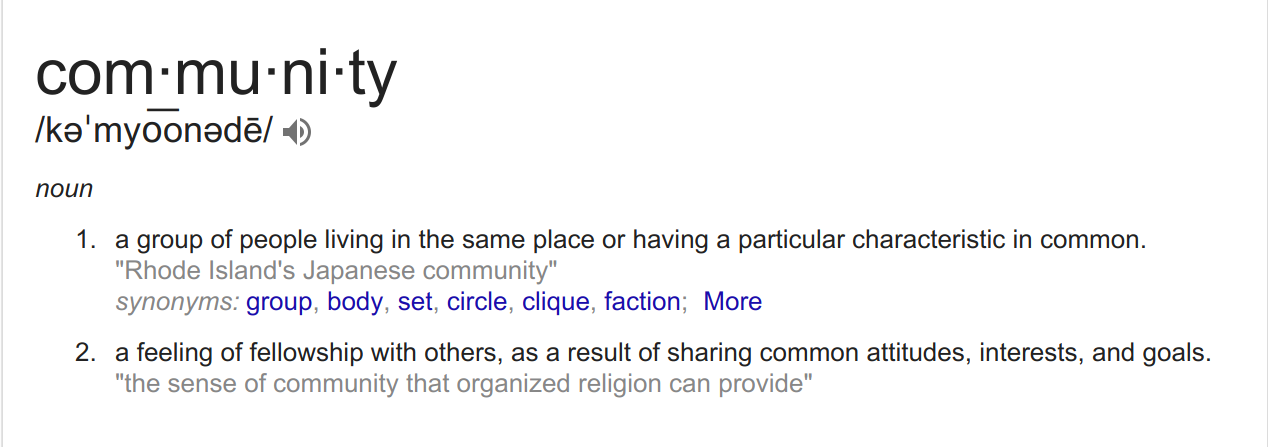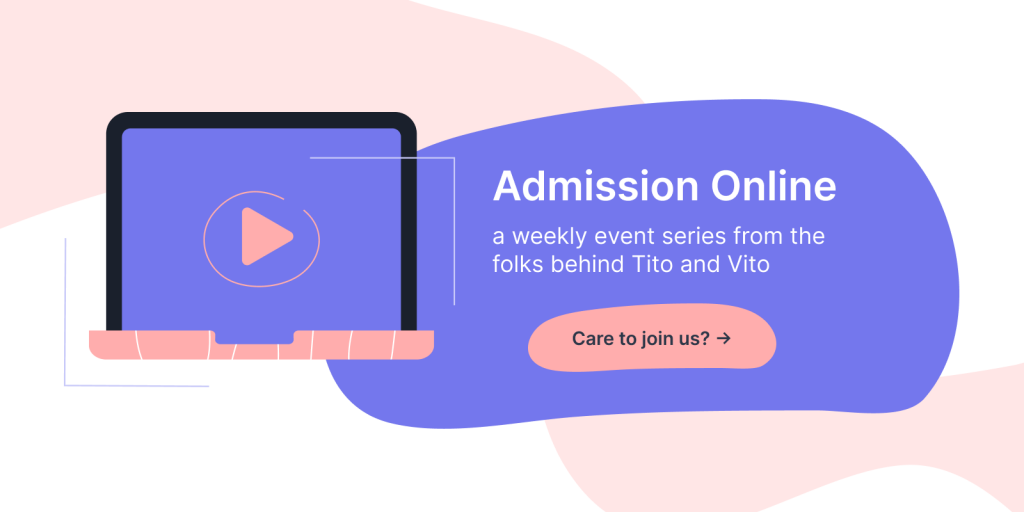
Virtual Event Engagement: 6 Steps to Help Nurture Your Community Online
Earlier this year we were joined by three community experts for one of our own virtual events, Admission Online.
They shared their personal stories of building communities and enabling others to do the same. As such, we wanted to put together what we learned from them about virtual event engagement to help your community thrive, even if the current situation means they can’t meet in person.
1. Know your definition of “community”
Rosie Sherry has been building communities for 15 years. At the moment, she’s leading the community over at Indie Hackers and previously founded Ministry of Testing. You could say community is her thing.

When considering what defines a community, Rosie said, “For me, a community is bringing together people who have something in common.”
She added, “For me, it’s just about people who care about something and want to gather around that particular thing. I don’t think it needs to be anything more than that.”
Communities can be anything from a basketball team to a global network of professionals.
This might seem obvious at first, but if you’re someone who’s working to nurture a community, you should start my establishing a clear vision of what the group you’re working with is passionate about, and why.
2. Collaborate to establish what your community wants to achieve
Rosie also highlighted the importance of knowing where you want to go with your community:
“The vision (of the community) is the most important thing. Where the people see it going, and what the goals are.”
Rosie Sherry
Sharing from her own experience, she gave us this example: “There was a vision with Ministry of Testing. We wanted to change something. We were there to change something in a positive way. And that’s what keeps pulling people in. We were bored, and didn’t believe in what was out there and how things were being done.”
Rosie also mentioned that there may not be any particular goals, and that’s okay. However, if there is a broader aim that your community wants to work towards, it’s important to identify what that is with your members and classify how you want to work towards that goal as a group.
This step will help keep your community excited and encouraged to continue interacting with the virtual events and activities you’re planning.
3. Accept your virtual audience’s restrictions, and accommodate them
“What does it mean to do a digital-first experience? First, you cannot think that you can take your in-person conference and translate it directly into a virtual event.”
This is what Jana Boruta had to say.
Jana is the director of global events and experiential marketing at HashiCorp. During her presentation she shared how HashiCorp’s carefully laid plans that were supposed to lead to continued growth through their events strategy were essentially thrown out the window when Coronavirus hit.
Calling the situation a “trash fire” she explained how reframing their processes for digital-first experiences gradually excited the team and lead them to “see the light.”
Her key takeaway from this adaptation was the need to understand that you can’t just copy and paste your old ways of creating events for in-person audiences. Rather, they began strategising from the bottom up to pivot the value of their productions for their now-remote audiences.
Before they could focus specifically on virtual event engagement, they thought about what the shape of their online offerings would look like as a bigger picture, and worked from there. Something all organisers should bear in mind when making the shift from stage to screen.
4. Establish a realistic schedule for the “new normal”
Jana emphasised the importance of recognising that people’s attention spans are different when they’re at home:
“The first thing we were exploring was re-thinking the schedule and re-thinking the sessions. For example, I’m here, I hear my doorbell ringing — my cat’s hungry… I’m a bit distracted. You have to understand that people are distracted. You just don’t have their full attention.”
They decided to experiment and re-frame their thinking around what sessions looked like and how they could optimise them for their audiences:
“We’re not doing a whole-day thing because it’s really hard to get someone to pay attention for 12 hours. What about if there were just two afternoons of four-hour sessions? It’s really hard to get people to focus for 50 minutes. What if those sessions were 20 minutes?”
Given that everyone is under extra pressure nowadays, it’s important to understand that value of everyone’s time even more than before. By cutting down the amount of time individuals in your community need to commit, they’re more likely to remain more engaged for the duration of your virtual events.
5. Make community building less of an abstract theory
Bailey Richardson is a partner at People & Company. She’s literally co-written the book on community building. As the final presenter speaking to our Admission Online audience, she explained how to take the abstractness out of community building, and how that can help with the overall feeling of belonging for organisers and community members alike.
She and her team have worked tirelessly on building a system for cultivating and bolstering communities. On the subject of community, she said this was the overarching element to keep in mind:
“Build a community with people, not for them.”
Bailey Richardson
Once you’re proceeding with that in mind, she breaks down three stages of community building, each containing three steps to practically help communities thrive:
- Spark the flame
- Stoke the fire and
- Pass the torch
In the first stage, community managers and leaders are encouraged to follow these steps:
- Pinpoint your people
- Do something together
- Get people talking
In the second:
- Attract new folks
- Cultivate your identity
- Pay attention to who keeps showing up
Finally, in the third:
- Create more leaders
- Supercharge your leaders and
- Celebrate together.
By creating a robust framework for your community, you build a repeatable process you can lean on when you don’t know where to go next, or how to grow next.
You’ll notice that, at each stage of this roadmap, the focus is on keeping the people who form your community involved. It may seem challenging at first to apply the steps in an online-first world. However, by listening to these people and including what they would want to see in virtual offerings, you guarantee virtual event engagement and a committed community who will help to nurture future folks who want to get involved.
6. Appreciate the benefits
It may feel like everything has been overhauled and that organisers have to work even harder than before. That is true, to a point, but there are some upsides that deserve to be acknowledged.
“These events now become accessible to all. People can now watch this from the comfort of their home.”
This example was provided by Jana, who also emphasised that a lot of the time, many people simply can’t afford the travel, ticket, and accommodation costs associated with in-person events. Not to mention those who can’t attend due to a lack of adequate physical accessibility at venues.
The added layer of inclusivity for these groups and more is certainly a reason to rejoice in the growth of virtual events, and that’s been reflected in the numbers for HashiCorp:
“It’s March and we’ve surpassed our attendee goals for in-person (events) for the whole year.”
And while it’d be remiss to say that everything in better than it was, it’s reassuring to know there are some positives to take stock of, and a future to look to when things get overwhelming:
“We just have to have faith that things are going to be better again. But it just won’t be the same, and I think that’s okay.”
Jana Boruta
